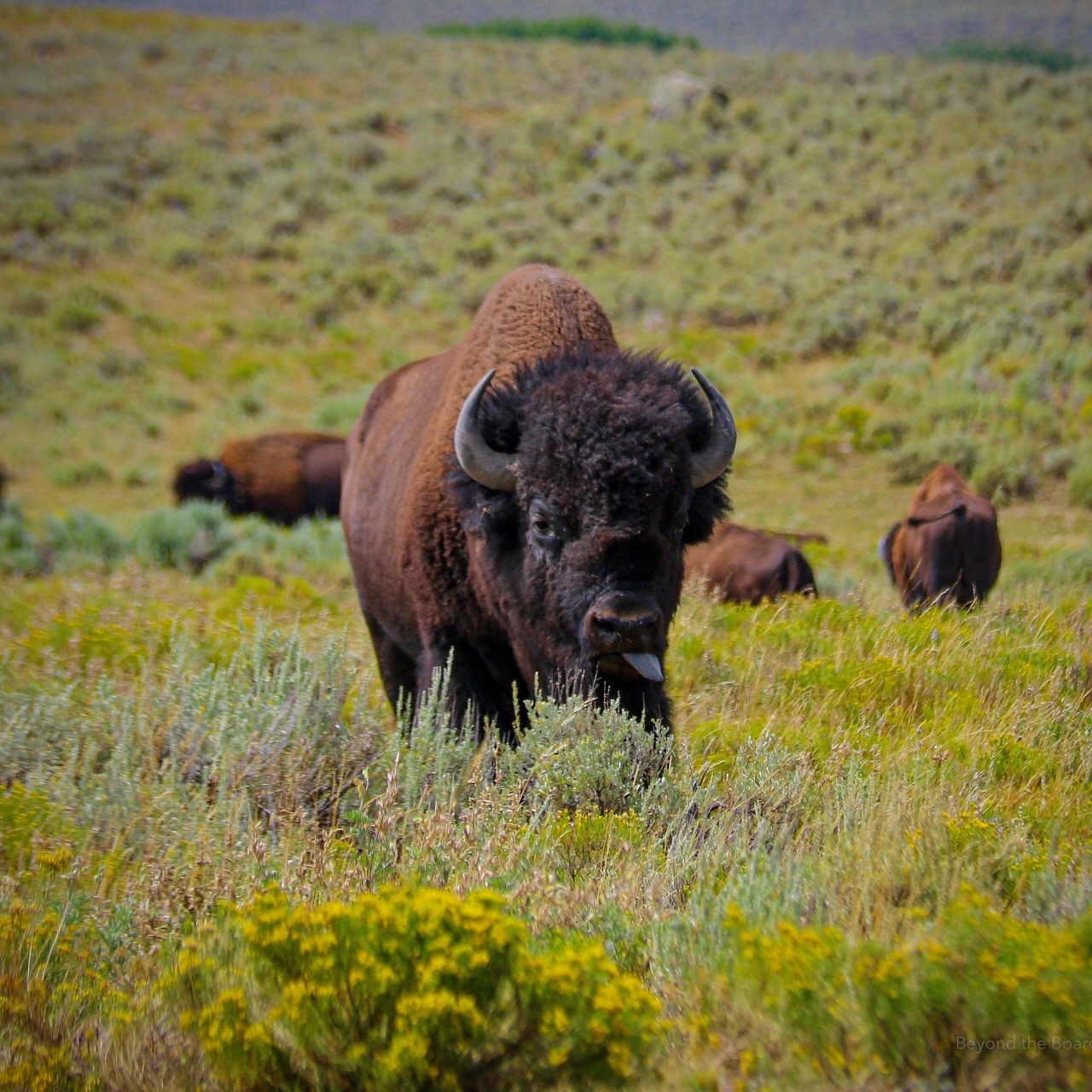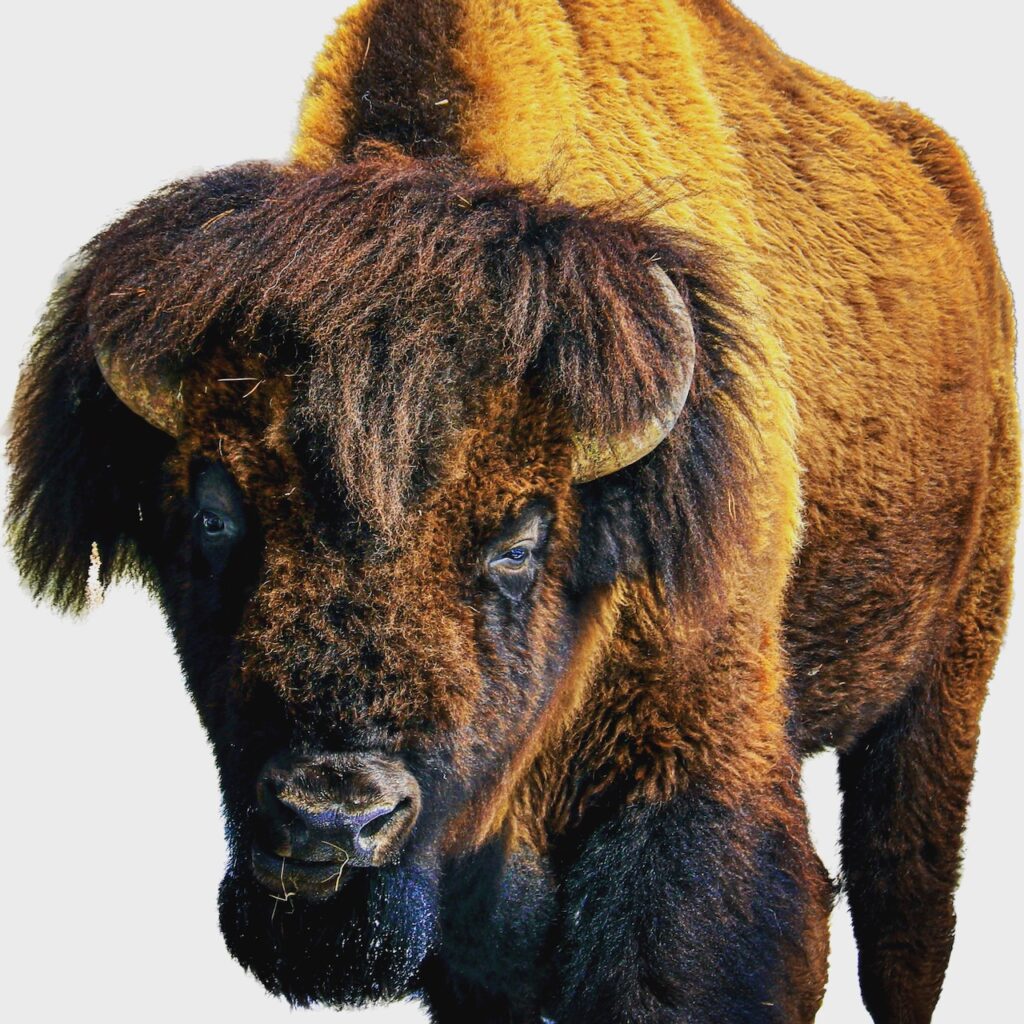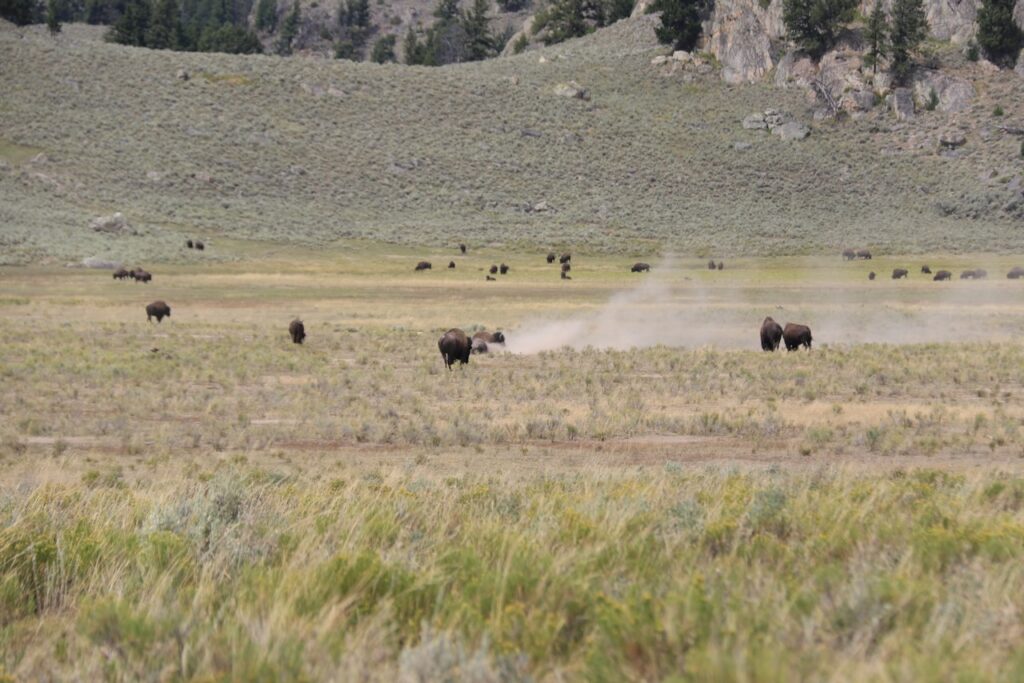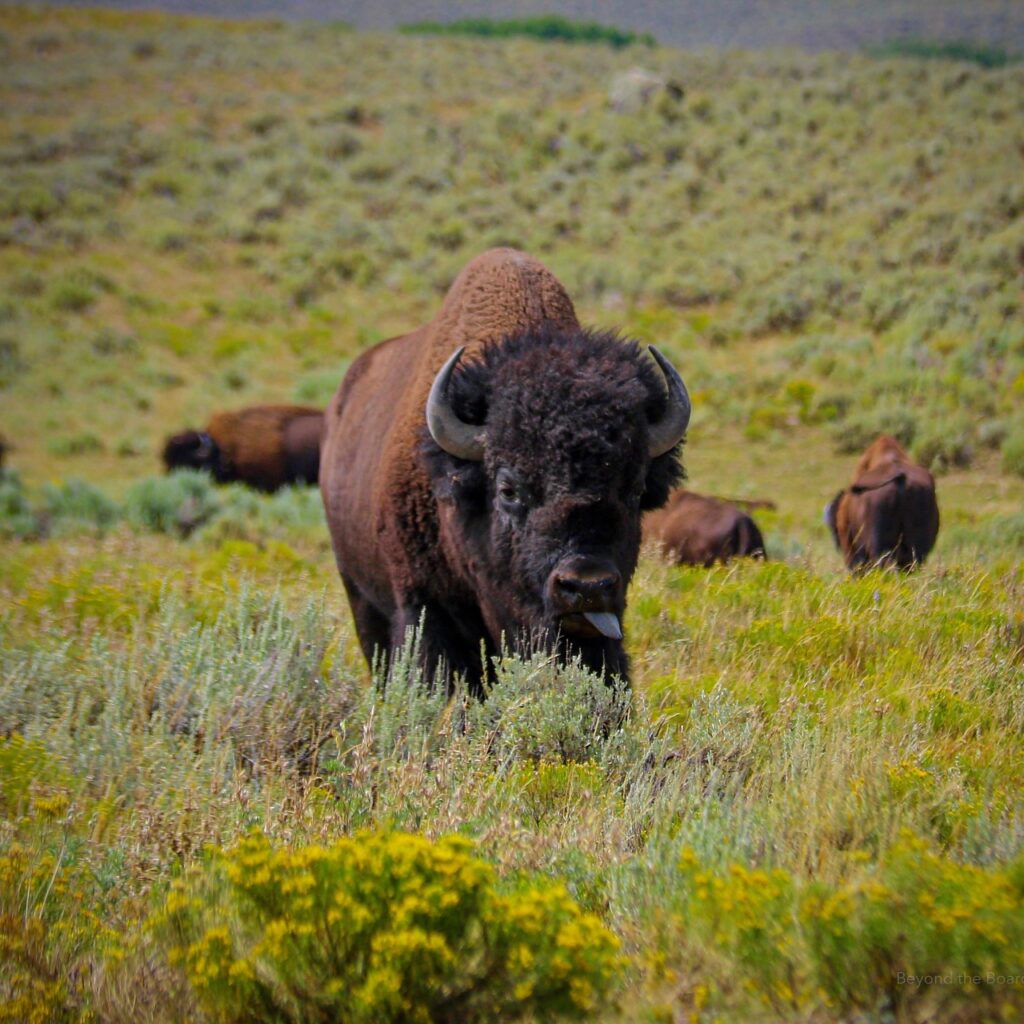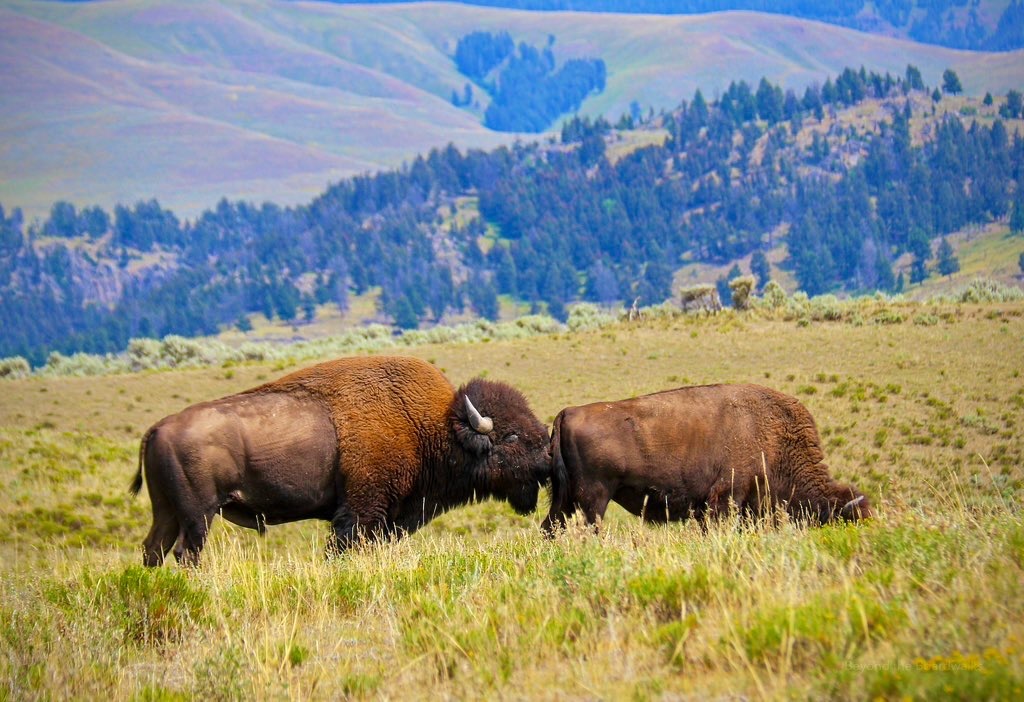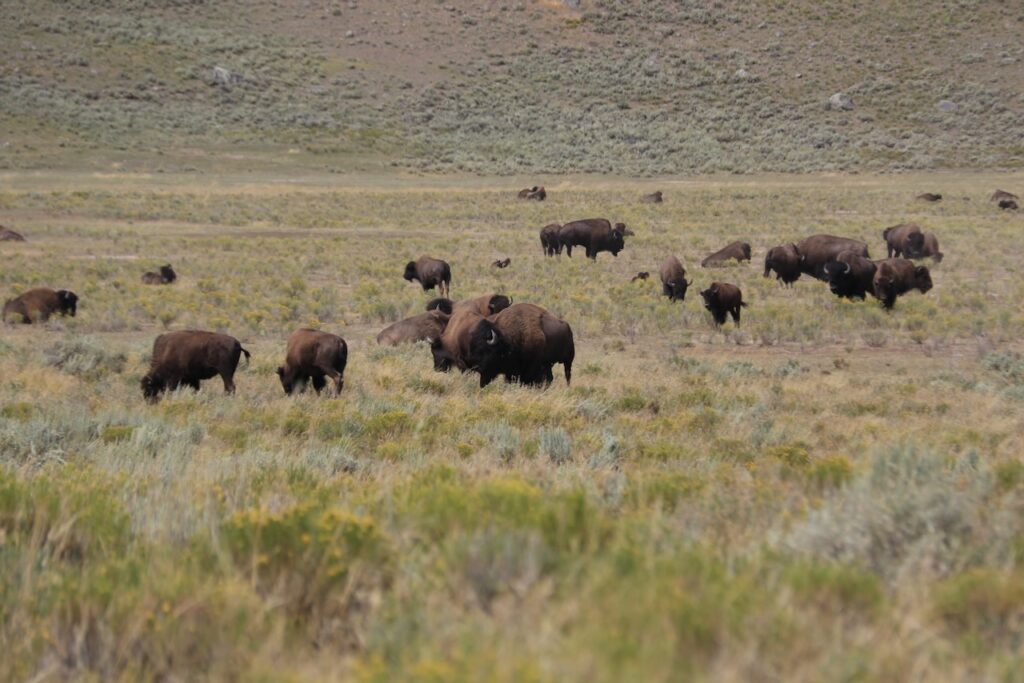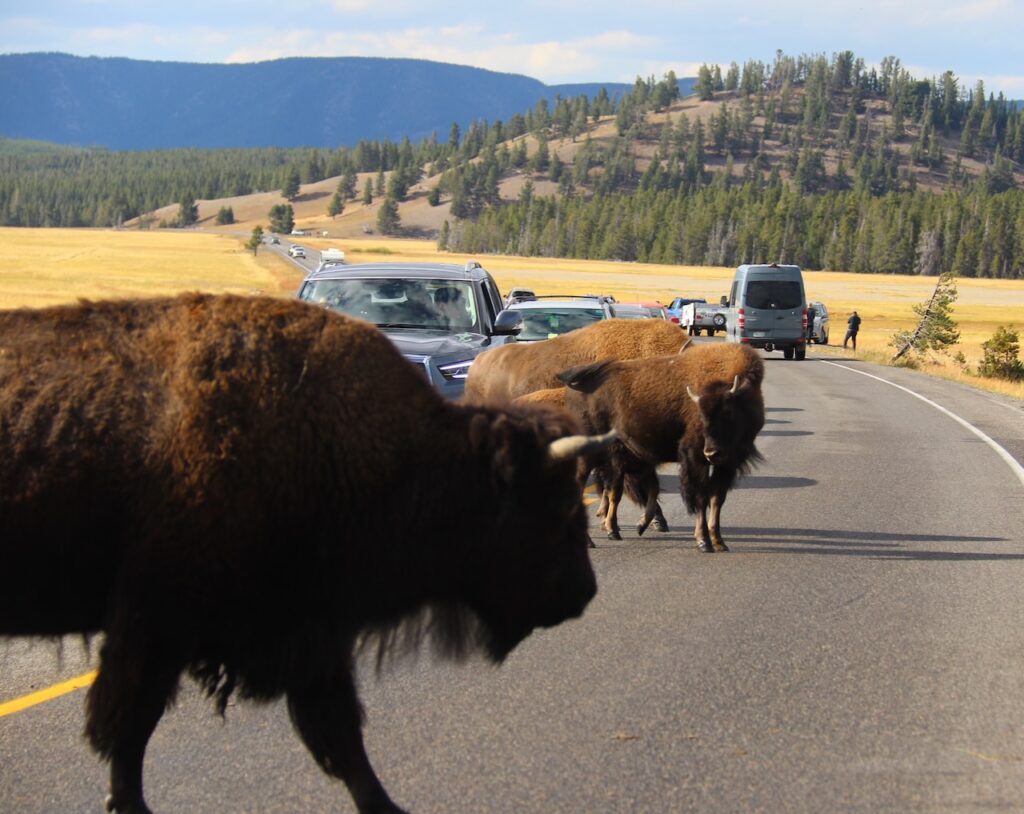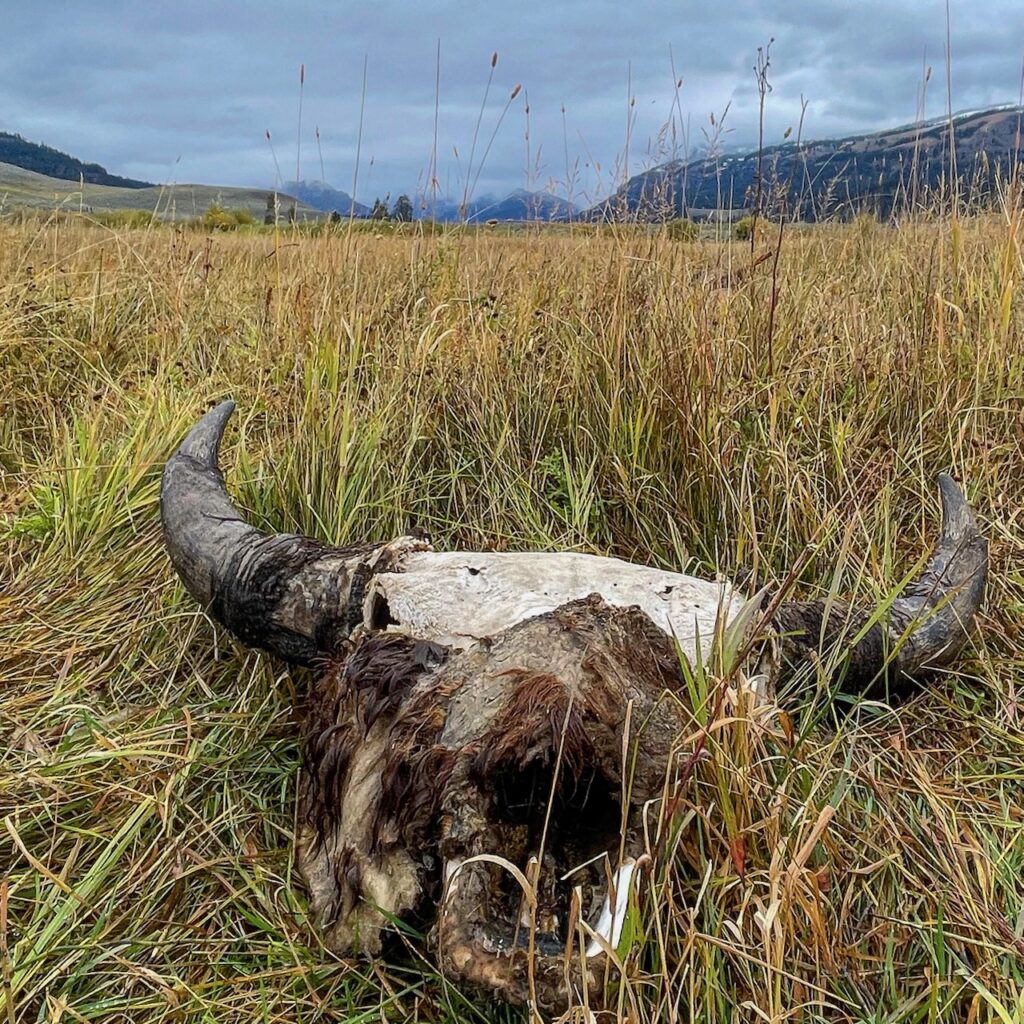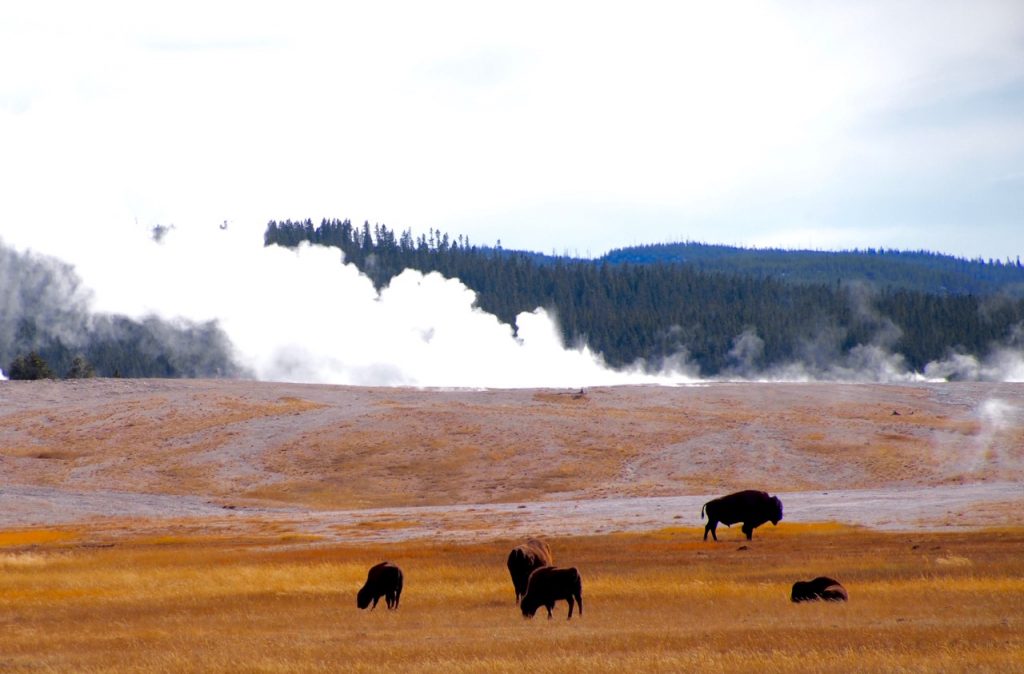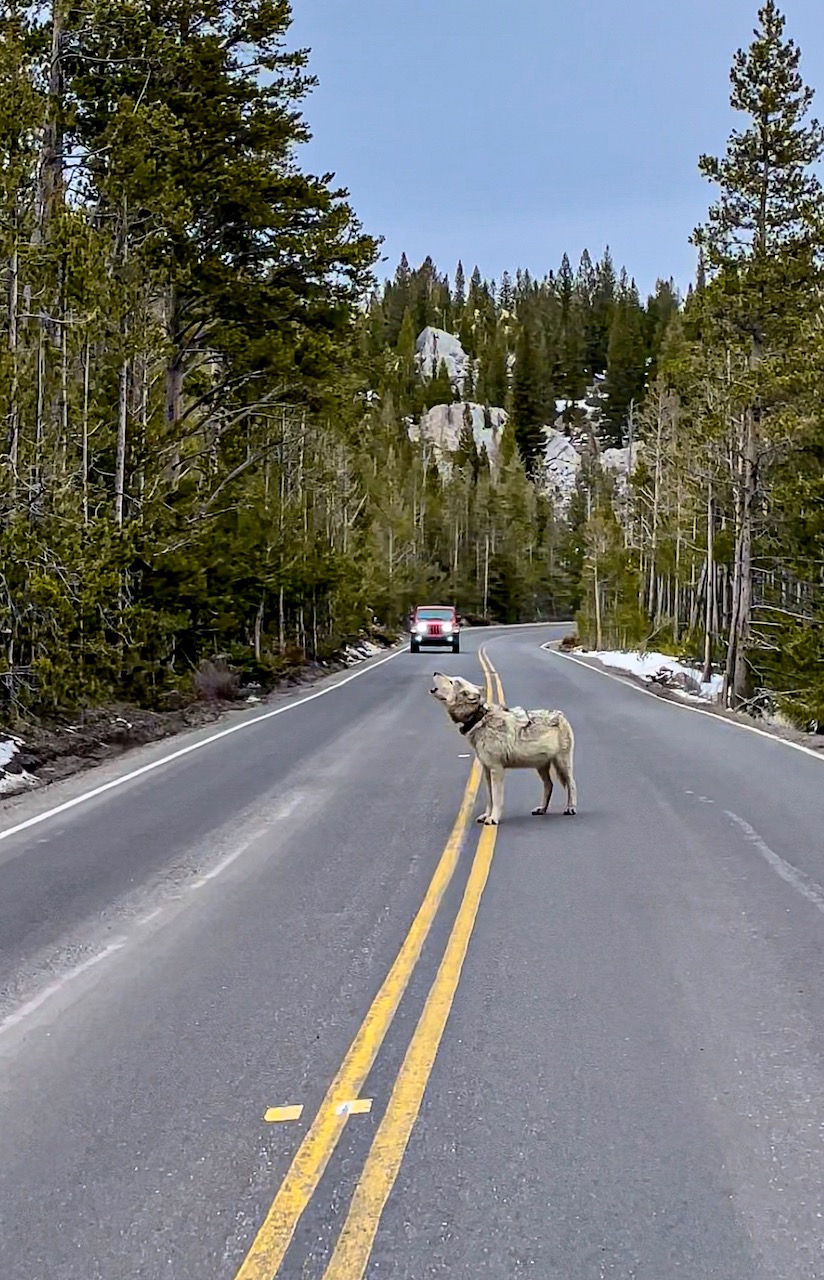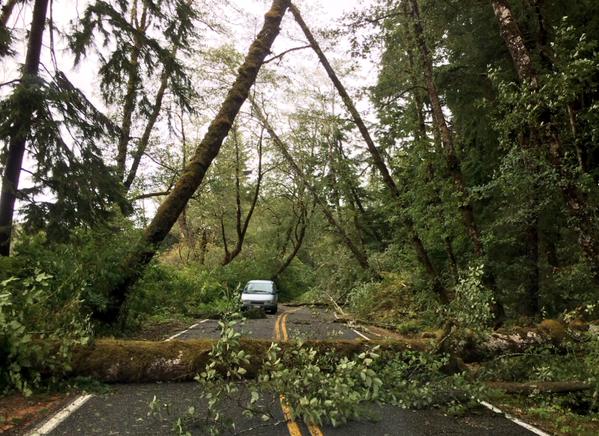Yellowstone National Park, stretching across Wyoming, Montana, and Idaho, is a sanctuary for national park enthusiasts, nature aficionados, and researchers of all fields. Among its many natural marvels, the bison rut stands out as a dramatic and captivating event. Each year, from late July through September, the bison rut transforms the park into a showcase of primal behavior, revealing the raw and untamed essence of these magnificent creatures.
The American Bison: America’s Mammal
The American bison (Bison bison), often mistakenly called buffalo, is an emblematic symbol of the American West. These enormous herbivores, distinguished by their shaggy brown coats and formidable horns, once roamed the plains in vast numbers. Today, Yellowstone National Park is home to one of the largest and most genetically pure herds of free-roaming bison, with thousands wandering within the park’s boundaries.
Understanding the Rut
The rut is another way to say mating season. For all species on earth, reproduction is a pivotal period in the life cycle. During the bison rut, bulls (male bison) vie for the opportunity to mate with cows (female bison). This season is driven by a mix of environmental cues and biological rhythms, ensuring that calves are born in the spring when conditions are optimal for their survival. A female’s gestation period lasts 285 to 300 days, after which she gives birth to one calf. Very rarely will she have two.
Throughout the rut, bulls become noticeably more aggressive and restless, propelled by a surge of testosterone. They engage in various behaviors aimed at establishing dominance and attracting females. These behaviors include wallowing, bellowing, and sparring. During the rut, bulls can lose nearly 200 pounds or 12% of their body weight during the rut because tending to females and breeding activities consume time that would otherwise be spent grazing.
Wallowing and Bellowing
Wallowing involves bison rolling in the dirt, creating depressions known as wallows. This behavior serves several purposes: it helps to eliminate parasites, provides a means to cool down, and acts as a display of strength and vitality. The sight of a massive bull raising clouds of dust while wallowing is both impressive and intimidating. On my tours, I often talk about this when we come across wallowing spots. The bull bison will often urinate in the dust, then roll in it to create the perfect smell to entice the females. I compare this to the use of Axe Body Spray.
Bellowing, the deep, resonant calls made by bulls, serves as a vocal display of dominance. These calls, audible over long distances, are a critical component of the rut. Bellowing advertises a bull’s presence and fitness to both potential rivals and mates. The sound of bison bellowing across the landscape is a quintessential part of the Yellowstone summer experience. It is also a comical sound to try to replicate and I strongly encourage you all to try it; after you hear it in person, of course.
Sparring and Dominance
Sparring is arguably the most dramatic aspect of the rut. Bulls engage in head-to-head clashes, using their powerful neck muscles and sharp horns to push and shove each other. These battles can be intense, with the potential for serious injury. However, most confrontations are relatively brief and end with one bull retreating. Occasionally serious injuries occur and bison will die. This is why you may also have sightings of bears and wolves around active rut areas.
The primary objective of sparring is to establish a dominance hierarchy among the bulls. The dominant bull, or herd bull, earns the right to mate with receptive cows. This system ensures that the strongest and fittest individuals pass on their genes, enhancing the health and resilience of the population.
“Courtship” and Mating
After establishing dominance, a bull focuses on courting cows. Bison courtship is a delicate and intricate process. The bull stays close to the cow, engaging in behaviors such as licking and nuzzling her, and performing a distinctive low rumble known as “tending.” This rumble serves to calm the cow and signal the bull’s intentions. Think of it as whispering sweet-nothings into a potential lover’s ear.
Mating occurs once the cow is receptive, which is for a period lasting only a couple of days. After mating, the bull may move on to find another mate, continuing the cycle until he has exhausted himself or been beaten out by younger, stronger bulls until the rut concludes.
The Role of Bison Cows
While much of the visible action during the rut involves bulls, cows play a crucial role as well. Female bison are selective in choosing their mates, often favoring larger, more dominant bulls. This selectivity ensures that their offspring have the best chance of survival.
Cows also engage in behaviors such as wallowing and bellowing, though less frequently than bulls. They are responsible for raising calves, teaching them how to forage and avoid predators. The bond between a cow and her calf is strong, and the next generation’s survival depends on the cow’s ability to protect and nurture her young.
Observing the Rut
For visitors to Yellowstone National Park, the bison rut offers a unique and unforgettable experience. Prime viewing areas include the Lamar Valley, and Hayden Valley, with the action visible from pullouts through these well-known areas. Early morning and late afternoon are said to be the best times to witness rutting behavior, as bison are most active during these cooler parts of the day. However, those who find themselves trying to drive through Hayden or Lamar will quickly learn that the rut knows no hours. Bison will battle, bellow, and roam around angrily throughout the day, more often than not snarling traffic.
Safety is paramount when observing the rut. Do not get out of your car when driving through the areas where bison are engaged in rut activities. Bison are wild animals and can be unpredictable, especially during the mating season. They can and will run at speeds over 30 miles an hour, and will toss you or trample you with ease. The rut is their more aggressive time of the year and they have zero patience. Follow all park regulations and ranger advice to ensure a safe and enjoyable experience.
Conservation and the Future of the Bison Rut
The bison rut is not only a fascinating natural phenomenon but also a testament to successful conservation efforts. Bison once faced near-extinction due to overhunting and habitat loss. Thanks to dedicated conservation work, their numbers have rebounded, and they once again roam freely in Yellowstone.
Challenges remain, including disease management, genetic diversity, and human-wildlife conflicts. Conservationists and park managers continue to work toward ensuring the long-term health of Yellowstone’s bison population. This includes maintaining large, genetically diverse herds and protecting critical habitats. Some bison are also shipped out to tribal lands to restore their population. Other bison who roam out of the park are captured and killed.
This is an important update on this. Montana’s GOP came out against this practice in July of 2024 as they were listening to the ranching community’s concerns about brucellosis. As of now, nothing has changed, but this stance could impact the export of bison to tribal lands from Yellowstone.
Finally
The bison rut in Yellowstone National Park is a powerful reminder of the beauty and complexity of nature. It showcases the intricate behaviors and social structures of these magnificent animals, offering a glimpse into a world that has existed for millennia. For those fortunate enough to witness it, the bison rut is an awe-inspiring spectacle that underscores the importance of preserving our natural heritage for future generations. As the dust settles and the echoes of bellowing bulls fade into the crisp autumn air, the cycle of life continues, and the legacy of the bison endures.
Become a Wildlife Watching Expert in Yellowstone
Embark on a captivating journey through the untamed beauty of Yellowstone National Park with my guidebook, “Wildlife Watching Yellowstone.” Immerse yourself in the awe-inspiring landscapes and learn the secrets of one of nature’s greatest spectacles. This guide is your passport to a world where bison roam freely, grizzlies majestically traverse the terrain, and elusive wolves play their part in the delicate balance of the ecosystem.
Whether you’re an avid nature enthusiast or a first-time explorer, this meticulously crafted guidebook will unlock the wonders of Yellowstone’s wildlife, offering insights into their behavior, habitats, and the best spots for unforgettable encounters. Let the pages come alive with vivid descriptions, stunning photographs, and expert tips, inviting you to witness the magic of the natural world in all its glory. Seize the opportunity to create lasting memories and deepen your connection with the wilderness – “Wildlife Watching Yellowstone” is your key to unlocking the wonders of this iconic national treasure.

